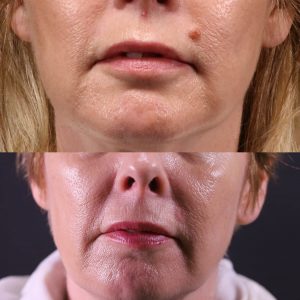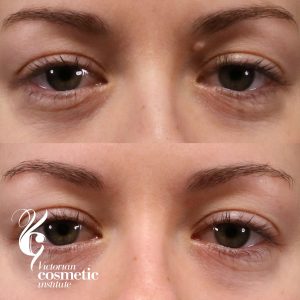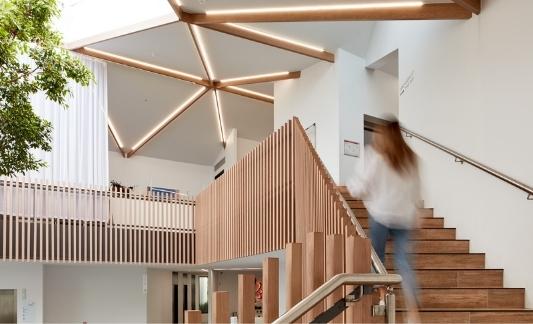Victorian Cosmetic Institute no longer provides treatment for radiofrequency mole removal. This page is for informational purposes only.
Radiofrequency Mole Removal Treatment Melbourne
What is radiofrequency surgery?
Radiofrequency surgery uses a band of wavelengths that can be used for skin surgery and mole removal. These high-frequency wavelengths generate minimal heat. The wavelength that is optimal for skin surgery is 4.0 megahertz (MHz), which is similar to the frequency of marine band radios. When channelled through an electrode tip, this wavelength can cut the skin and simultaneously coagulate blood to produce a bloodless incision. Also, as it generates minimal heat, surrounding tissues are unaffected.
Compared to the traditional method of skin excision with a scalpel, radiofrequency has many advantages when incising skin or removing skin lesions. Traditionally, skin incisions for surgery or skin lesion removal are done surgically with a scalpel. Incisions made this way tend to bleed and leave more scarring. The advantages of radiofrequency surgery include;
- No pressure is required to make an incision – i.e. it can be more precise
- Simultaneous blood coagulation whilst cutting
- Incisions are bacteria-free
- The scarring produced is usually less than scalpel incisions
- Generally considered less risk than using scalpels
- Enhanced healing, with less swelling, bleeding, pain, and infection afterwards in comparison to scalpel incisions
- It can shave-down skin lesions, so no stitches are required, and no scars are left.
- Cosmetically superior results to scalpel incisions
At Victorian Cosmetic Institute, we use the Ellman Pelleve to perform this treatment on moles.
What can radiofrequency be used for?
Radiofrequency can make skin incisions or remove lesions such as benign naevi (moles, mole removal), warts, seborrhoeic keratosis (benign skin lesion), and skin tags.
It helps remove benign skin lesions, as the skin lesion can be gradually shaved down until the skin level is reached.
What does radiofrequency skin lesion removal involve?
The first step is to consult with one of our doctors. They will assess whether the lesion is suitable for radiofrequency treatment.
A small amount of local anaesthetic is injected into the base of the lesion. The electrode tip is then brushed over the top of the lesion, removing it layer by layer.
Usually, no dressing is required after the treatment.
In most cases, the recovery time is approximately 7 to 10 days. During this time, the skin may appear slightly red.
Upper lip mole removal before and after
This patient had a mole that was growing in size on her upper lip. Radiofrequency was used to shave this back to the skin level.

All procedures carry a risk of side effects and potential complications. The outcome of each procedure cannot be guaranteed, and individual results may vary. A consultation with one of our practitioners is required prior to any procedure to assess suitability for treatment. Patient consent has been obtained to display images.
Radiofrequency removal of mole on eyelid before and after
Radiofrequency was used to remove this mole under the patient’s left brow. The recovery period was approximately one week, and the photo after treatment was taken two months after the treatment.

All procedures carry a risk of side effects and potential complications. The outcome of each procedure cannot be guaranteed, and individual results may vary. A consultation with one of our practitioners is required prior to any procedure to assess suitability for treatment. Patient consent has been obtained to display images.
Last updated November 2025
